Revolution® Max 1250T, Ride Modes, TFT Display with Infotainment, Cornering Rider Safety Enhancements by Harley-Davidson®
The Harley-Davidson® Sportster® S is an all-new performance custom motorcycle designed to give the rider exhilarating performance backed by contemporary technology. The Sportster S model will redefine the Sportster series, launching a new era of Sportster performance and design.
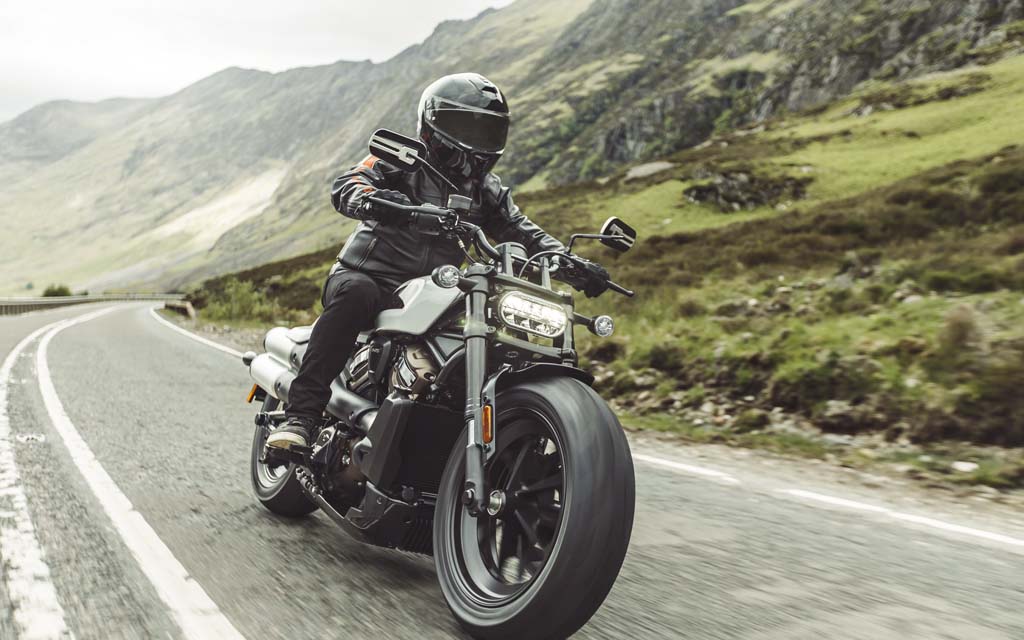
Revolution® Max 1250T Powertrain
The Sportster® S model is powered by the Revolution Max 1250T engine, a liquid-cooled V-Twin tuned to make tremendous torque at low RPM, with a torque curve that stays flat through the powerband – engine performance designed to deliver strong acceleration from a start with robust power through the mid-range.
- Displacement 1250cc
- Bore x Stroke: 4.13 in. (105 mm) x 2.83 in (72 mm)
- 121 horsepower
- 94 ft. lbs. peak torque
- Peak 9500 RPM
- Compression Ratio 12:1
The Revolution Max 1250T engine is similar to the Revolution Max 1250 engine that powers the Harley-Davidson® Pan America™ 1250 models, with these key differences:
- Cylinder heads have smaller valves and port dimensions, and a different combustion chamber shape, which increases the velocity of flow through the combustion chambers at lower RPM, and increases torque output at low and midrange RPM (providing up to 10% more torque from 3000 to 6000 RPM).
- Pistons are shaped to match the combustion chamber dimensions of the cylinder heads.
- The length and shape of the intake velocity stacks, combined with the airbox volume, are tuned to maximize performance across the engine speed range.
- The camshaft profiles and Variable Valve Timing (VVT) phasing are also designed to match the desired performance of this engine.
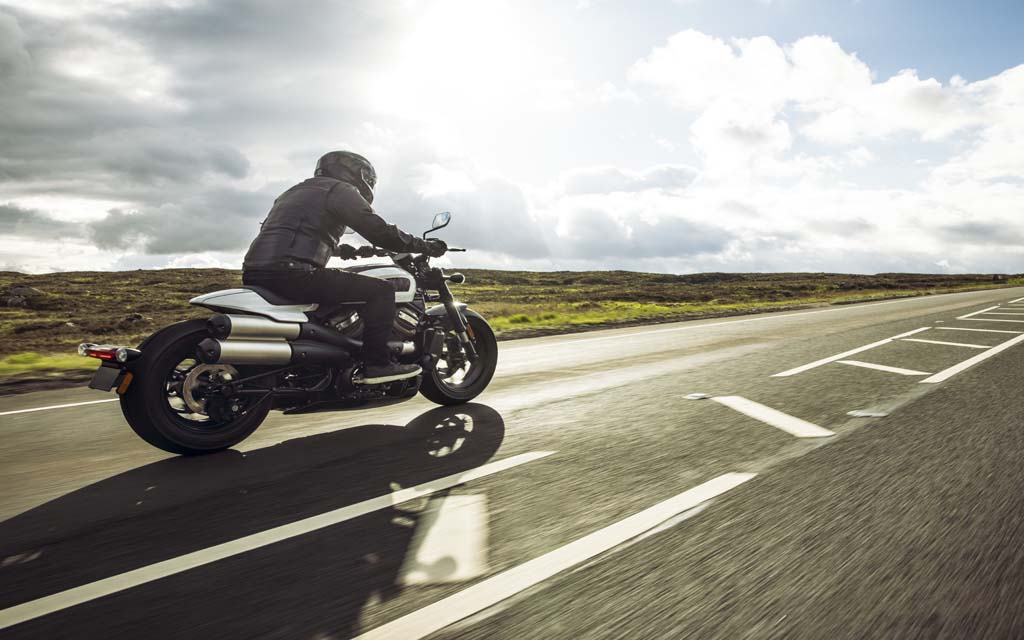
Revolution® Max 1250T Model Highlights
- V-Twin Architecture: A 60-degree V-Twin design provides a narrow powertrain profile that centralizes mass to enhance balance and handling, and also provides ample foot/leg room for the rider. Separate throttle bodies are located between the cylinders, positioned to create minimal turbulence and impedance to air flow.
- Optimized Design for Light Weight: Reducing the weight of the powertrain contributes to lower motorcycle weight, which enhances motorcycle performance experienced by the rider: efficiency, acceleration, handling, and braking.
– The use of finite element analysis (FEA) and advanced design optimization techniques in the engine design stage minimized material mass in cast and molded components.
– Single-piece aluminum cylinders with nickel silicon carbide-surface galvanic coating are a lightweight design feature.
– Camshaft covers and primary cover are lightweight magnesium. - Stressed Member Powertrain
The Revolution Max 1250T powertrain is a structural component of the motorcycle chassis.
– The engine serves two functions – providing power and acting as a structural element of the chassis.
– Eliminating a traditional frame significantly reduces motorcycle weight and results in a very stiff chassis.
– A front frame element, mid frame element and the tail section bolt directly to the powertrain.
– The powertrain is designed to be both strong and very rigid so that it can effectively function as a chassis component.
– The rider realizes optimized performance due to a significant weight savings, a rigid chassis and mass centralization. - Liquid Cooling: Liquid cooling maintains a stable and controlled engine and oil temperature for consistent performance in changing environmental and riding situations (cold to hot ambient temperatures, riding at speed or stuck in traffic, conservative or aggressive riding). The engine oil is also liquid cooled, which ensures that engine oil performance and durability will be maintained in challenging conditions.
- Four-Valve Cylinder Heads: Four-valve cylinder heads (two intake and two exhaust) permit an expansive valve area. The flow of gasses through the combustion chamber is optimized to match the desired performance requirement and engine displacement.
- Dual Overhead Camshafts (DOHC) and Variable Valve Timing (VVT): The Revolution® Max 1250T engine is equipped with separate intake and exhaust camshafts for each cylinder. The DOHC design permits independent Variable Valve Timing (VVT) on the intake and exhaust cam, optimized for the front and rear cylinder. VVT can help broaden the overall powerband and improve torque management and efficiency. This allows the same engine to provide the rider with both low-end grunt for acceleration off the line as well as the thrill of high-RPM horsepower. Hydraulic valve lash adjustment ensures quiet operation and eliminates the need for costly, complicated service procedures.
- Forged Aluminum Pistons
– Piston crowns are machined for precise control of a 12:1 compression ratio. The engine is designed for use with premium-grade (91 octane) fuel to make maximum power, but will run on lower-octane fuel, protected from potential detonation by the knock sensor technology.
o The piston skirt has a low-friction coating.
o Low-torsion piston rings reduce friction, which improves performance.
o The top ring land is anodized to enhance durability.
o Two oil cooling jets are aimed at the bottom of the pistons to help dissipate combustion heat. - Balanced Powertrain: Internal balancers help cancel engine vibration to enhance rider comfort and improve vehicle durability. The balancers are tuned to retain just enough vibration to make the motorcycle feel “alive.”
- Clutch and Transmission: The Revolution® Max is a unitized powertrain, meaning that the engine and six-speed transmission are housed in a common case. The clutch is mechanically actuated with a large-diameter cable for smooth, consistent disengagement and minimal drag. A clutch slipper function enables the rider to downshift without over-speeding the engine or slipping or hopping the rear wheel.
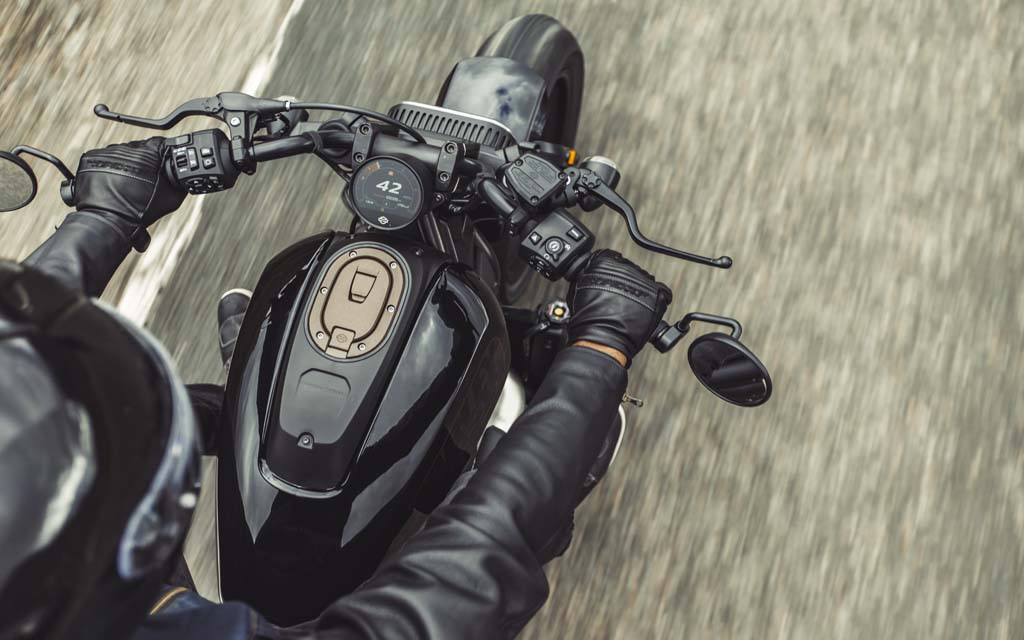
Sportster® S Model: Instrumentation
The Sportster® S model features a round 4.0-inch-diameter TFT screen (thin-film-transistor, a type of liquid-crystal display noted for high image quality and contrast) that displays all instrumentation and infotainment functions.
- All display functions are managed using buttons on the left- and right-hand control array, when the motorcycle is at rest or when it is in motion.
- The screen is covered with non-reflective glass to make it easier to view in most lighting conditions. Colors and the design of the display were selected to make the screen comfortable to view.
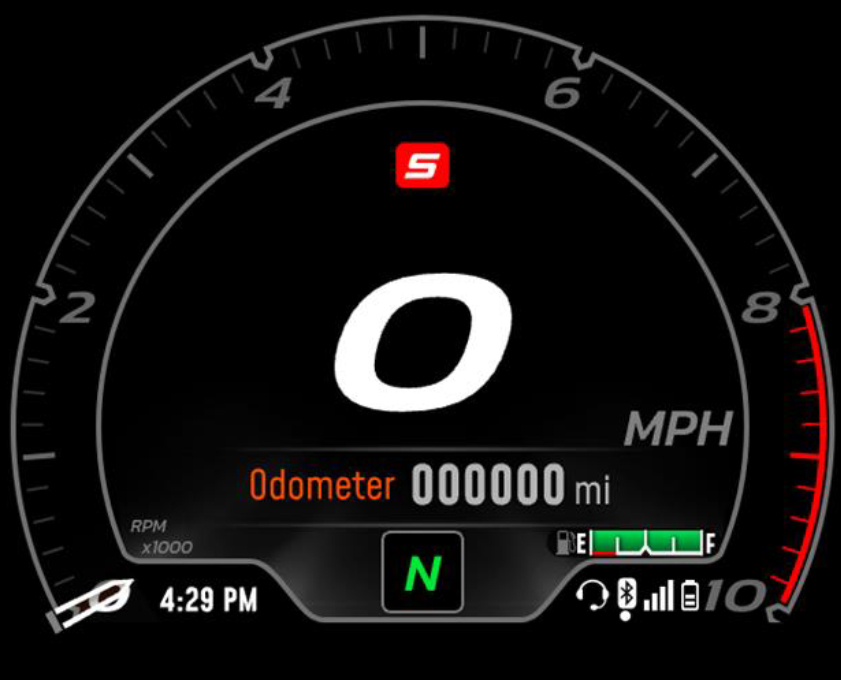
Base Screen display
– Large digital speedometer display on center is surrounded by an arching tachometer graph.
– Indicators and warning lights appear on the top edge of the display.
– A space below the speedometer accommodates pop-ups for incoming phone calls and alerts such as “low fuel,” “side stand down,” and “low temperature.”
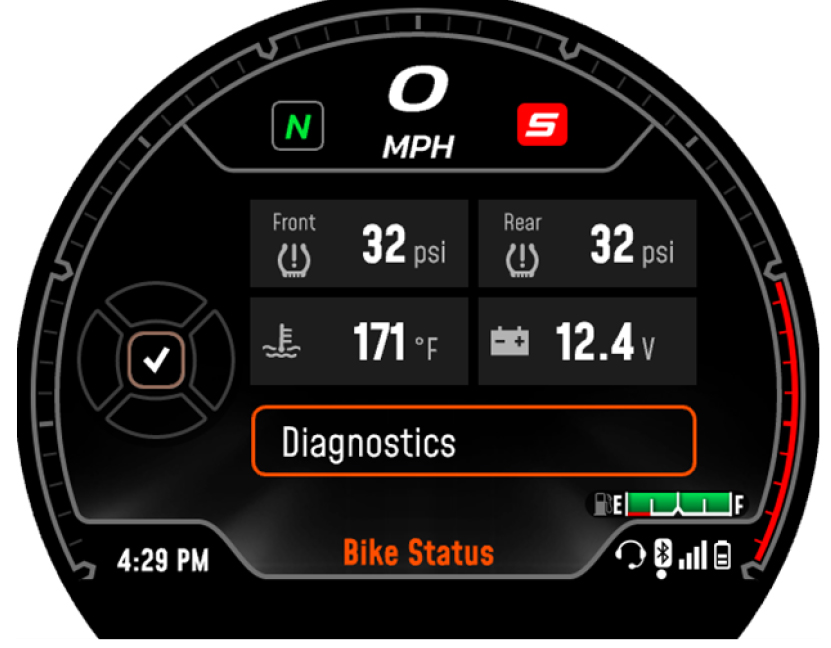
Bike Status Screen display
The rider can select this display option to put bike status information in a prominent position on the screen, with a smaller speedometer on the upper screen. Status information includes front and rear tire air pressure, engine temperature and oil pressure, battery voltage, and diagnostic codes.
Sportster® S Model: Infotainment
The Sportster® S model display supports infotainment generated by the rider’s Bluetooth®-equipped mobile device. The motorcycle does not have an on-board infotainment system, and it is not equipped with speakers. Most infotainment functions also require a Bluetooth headset and speakers worn within a helmet (sold separately).
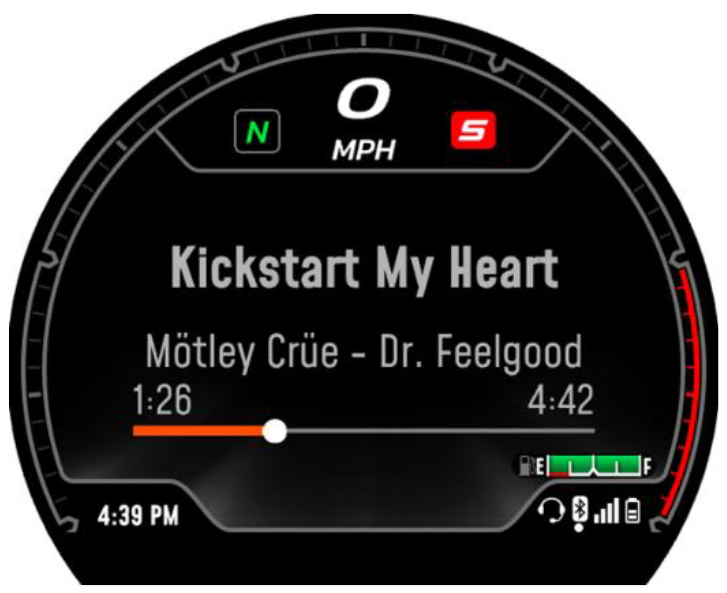
Music
- Music files stored on a mobile device or music streamed through a mobile device may be played through the system, as the rider listens through a headset. The artist and track name will appear on the display, and the rider may use the hand controls to scroll through music files and adjust the volume.
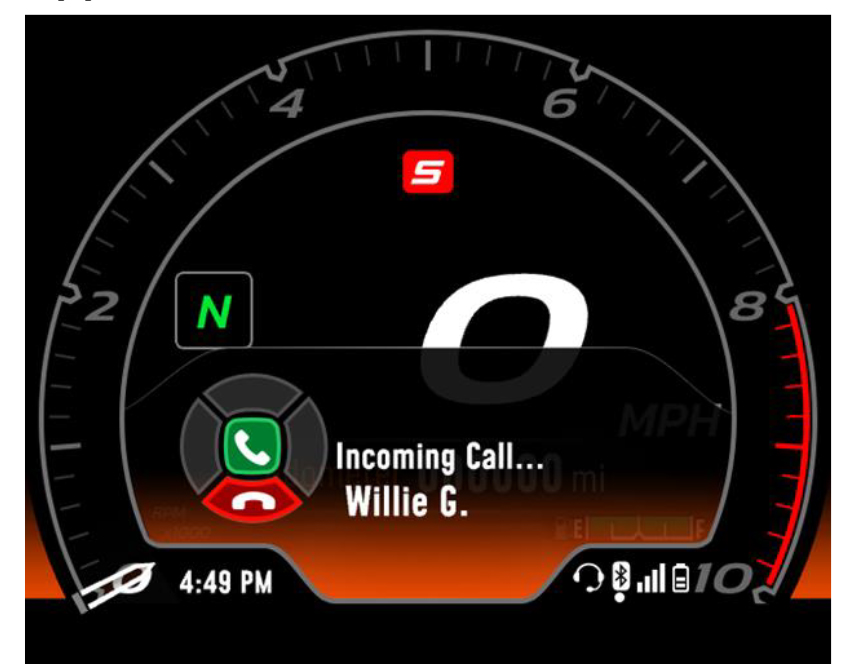
Calls
- Using voice commands through the headset, the rider can receive or place calls through a mobile device. The caller ID of an incoming call may appear on the display.
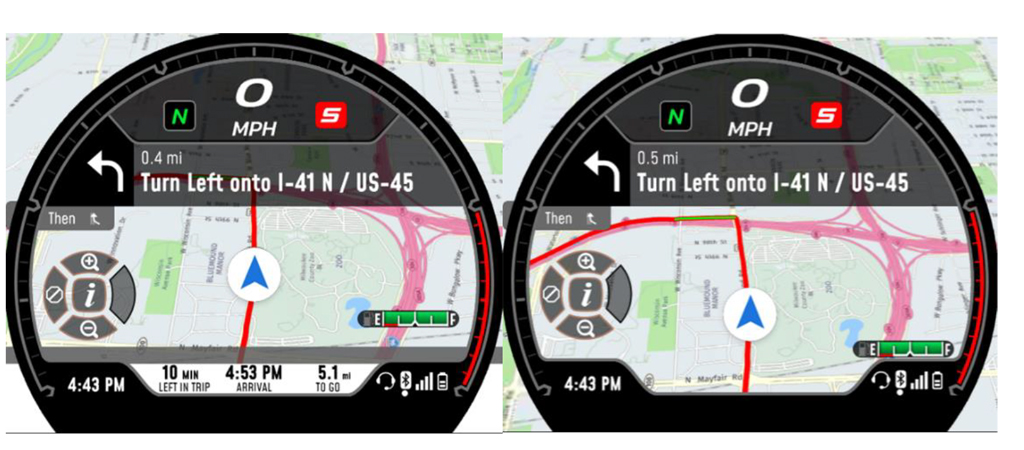
Navigation
- Navigation is supplied by the Harley-Davidson® App for iOS or Android, which must be downloaded into the rider’s mobile device. When navigation is enabled, the rider may select a moving map display or turn-by-turn map, either of which are displayed on the screen, assisted by audio instructions through the headset.
– When the moving map is displayed, the speedometer, turn signals and other key information is displayed above the map.
– Using the hand controls, the rider may pan and zoom the map to see more detail.
– The Harley-Davidson® App helps riders get the most out of their time on the road with features including recommended rides, ride planning, ride recording, riding challenges and the ability to find Harley-Davidson® dealerships, gas stations, hotels, restaurants, motorcycle events and other attractions.
– Because the navigation system in the Harley-Davidson® App relies on cell service (there is no GPS receiver on the motorcycle), navigation could be disrupted if there is no cellular signal. However, the rider can pre-load an entire route and save it in memory as a back-up.
– The Harley-Davidson® App navigation system automatically updates, a convenient feature that can be utilized in place of adding updates to an on-board navigation system.
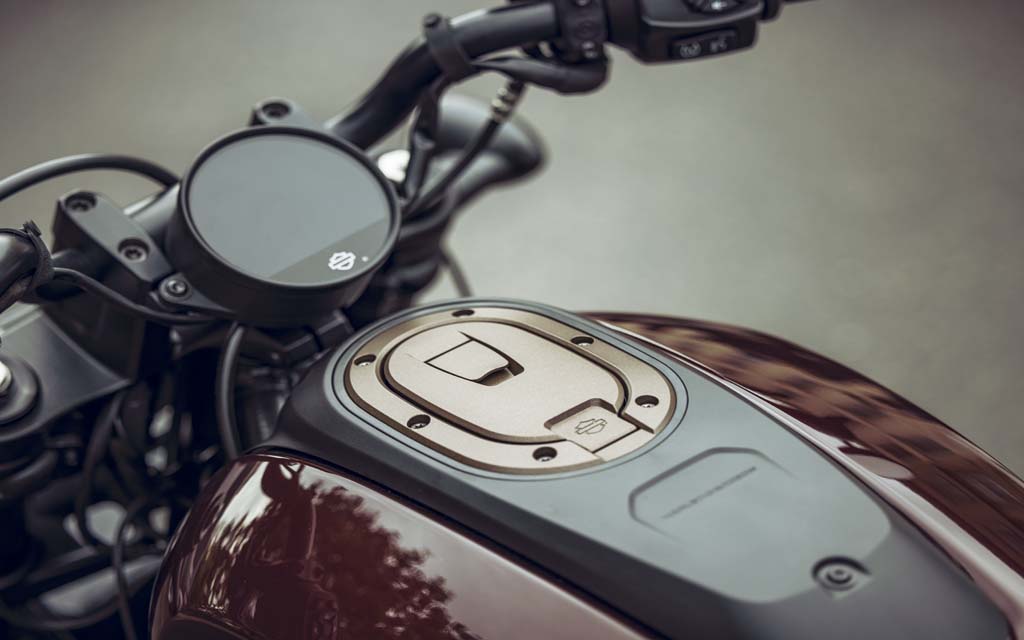
Sportster® S Model: Cornering Rider Safety Enhancements
The Sportster® S model is equipped with Cornering Rider Safety Enhancements by Harley-Davidson®, a collection of technologies designed to enhance rider confidence during unexpected situations or adverse road conditions. Cornering Rider Safety Enhancements are designed to match motorcycle performance to available traction during acceleration, deceleration, and braking, in a straight line or while in a turn. The systems are electronic and utilize the latest chassis control, electronic brake control and powertrain technology.
The Sportster® S model is equipped with a six-axis inertial measurement unit, or IMU, that measures and reports the lean angle as it navigates a turn. While cornering, available grip for braking or accelerating is reduced. Cornering enhanced technology takes this into account, and for optimal performance, intervenes differently when the motorcycle is leaned compared to when the motorcycle is upright.
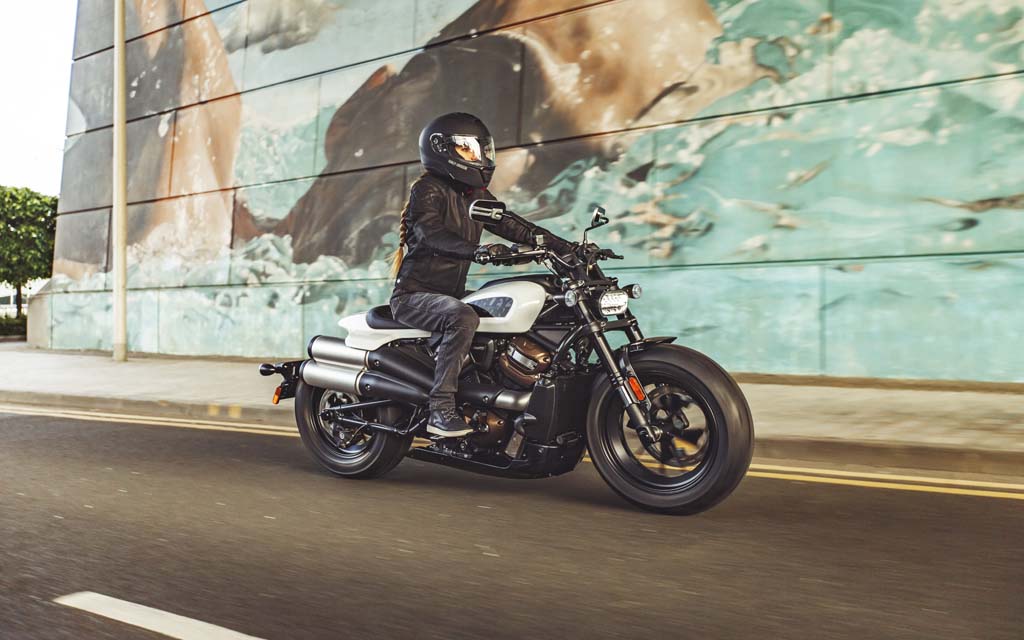
Disclaimer: Available traction is determined by the road/tire interface. The systems are only able to adjust brake pressure or powertrain torque in an attempt to keep the forces at the tire from exceeding available grip. These technologies do not have the ability to increase grip, to intervene when the rider has not made a brake or throttle application, or to directly influence vehicle direction. This is a key difference between motorcycle systems and automotive stability control. The rider is ultimately responsible for steering, speed and path corrections.
- Cornering Enhanced Antilock Braking System (C-ABS)
ABS is designed to prevent the wheels from locking under braking and helps the rider maintain control when braking in a straight-line, urgent situation. ABS operates independently on front and rear brakes to keep the wheels rolling and prevent uncontrolled wheel lock. Cornering Enhanced Antilock Braking System (C-ABS) is a variant of ABS that takes into consideration the lean angle of the motorcycle. While cornering, the available grip for braking is reduced and C-ABS automatically compensates for this reality. Rear-wheel Lift Mitigation utilizes the C-ABS sensors and the inertial measurement unit (IMU) to manage rear-wheel lift during heavy braking and further balance deceleration and rider control. - Cornering Enhanced Traction Control System (C-TCS)
Traction Control System (TCS) is designed to prevent the rear wheel from excessive spinning under acceleration. TCS can improve rider confidence when available traction is compromised by wet weather, an unanticipated change in the surface, or when riding on an unpaved road. Cornering Enhanced Traction Control (C-TCS) is a variant of TCS that accounts for the lean angle of the motorcycle. Each pre-programed Ride Mode has a specific level of C-TCS. In the customizable ride modes, the rider can select from three levels of C-TCS intervention.The rider can deactivate C-TCS in any Ride Mode when the motorcycle is stopped and the engine is running. Changing to Rain Mode will automatically re-enable C-TCS, but C-TCS may be disabled again after Rain Mode has been selected. C-TCS can be re-activated with the push of a button on the right-hand control when the motorcycle is stopped or underway.C-TCS is also designed to support Front-Wheel Lift Mitigation (FLM) to reduce the height and duration of front-wheel lift (wheelie). The height and duration of front-wheel lift is tied to the rider-selected Ride Mode, with Rain being the most-restrictive and Sport being the least-restrictive of the standard modes. Turning off C-TCS fully disables both C-TCS and FLM. - Cornering Enhanced Drag-Torque Slip Control System (C-DSCS)
Cornering Enhanced Drag-Torque Slip Control System (C-DSCS) is designed to reduce excessive rear-wheel slip and help prevent rear-wheel lock under powertrain-induced deceleration, which typically occurs when the rider makes an abrupt down-shift gear change or quickly reduces the throttle while on wet or slippery road surfaces.When C-DSCS detects excessive rear wheel slip under powertrain-induced deceleration it will adjust engine torque delivery to better match rear-wheel speed to road speed. The action of C-DSCS is tailored when cornering, based on detected lean angle. - Tire Pressure Monitoring System (TPMS)
Tire Pressure Monitoring System (TPMS) alerts the rider to low tire air pressure. Maintaining proper tire air pressure is important both for vehicle performance and tire life. The TPMS displays current front and rear tire pressure on the color display screen and displays an indicator to alert the rider when tire pressure is low, and the pressure should be checked.
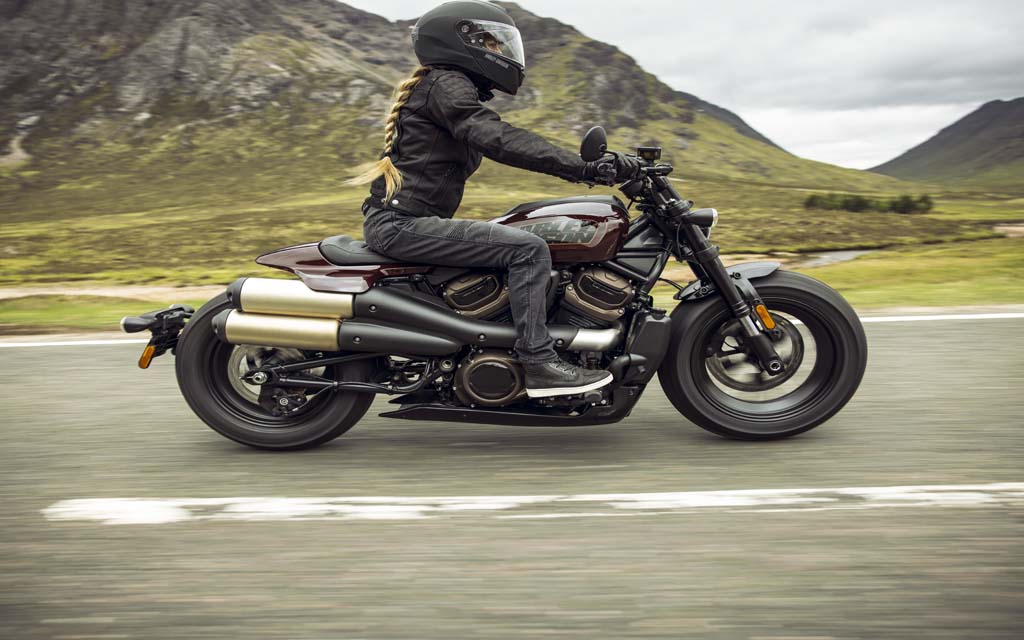
Sportster® S Model: Ride Modes
The Sportster® S model offers selectable Ride Modes that electronically control the performance characteristics of the motorcycle, and the level of technology intervention. Three of the modes are pre-programmed, while two additional modes may be customized by the owner. Each Ride Mode consists of a specific combination of power delivery, engine braking, C-ABS and C-TCS settings.
The rider may use the MODE button on the right-hand controller to change the active ride mode while riding the motorcycle or when stopped, with some exceptions. A unique icon for each mode appears on the instrument display when that mode has been selected.
With the exception of the Road Mode, the rider may disable Ride Modes through the settings menu on the instrument display. The Custom Ride Modes need to be enabled by the rider through this settings menu before they can be selected with the MODE button during operation.
– Road Mode: Intended for daily use, Road Mode delivers balanced performance. This mode offers less-aggressive throttle response and less mid-range engine power than Sport Mode, with a higher level of C-ABS and C-TCS intervention. In some markets Road Mode is the default “key on” mode on the Sportster® S model, while in North America the bike will always default to the Ride Mode selected at the last “key off” event. If there is ever a Ride Mode fault issue, the system will automatically default to Road Mode.
– Sport Mode: Sport Mode maximizes the rider connection to the motorcycle for a direct and visceral performance riding experience; the rider will experience the full performance potential of the motorcycle in a direct and precise manner, with full power and the quickest throttle response. C-TCS is set to its lowest level of intervention, and engine braking is increased.
– Rain Mode: This mode is designed to give the rider greater confidence when riding in the rain or when traction is otherwise limited. The Rain Mode is also an appropriate setting for riders building confidence as they become familiar with the motorcycle. Throttle response and power output are programmed to significantly restrain the rate of acceleration, engine braking is limited, and the highest levels of C-ABS and C-TCS intervention are selected.
– Custom Mode: The Sportster® S model has two Custom Ride Modes. Within each Custom Mode the rider may create a set of performance characteristics to meet personal preference or for special situations. To create a Custom Mode the rider may select their combined preference of engine torque delivery characteristics, engine braking, throttle response, and C-TCS and C-ABS intervention, within specific ranges. For example, the rider could create a mode with the Sport engine performance and maximum throttle response (as is pre-programmed Sport Mode) but with a lower level of engine braking than is offered in the pre-programmed Sport Mode.
Learn more about the Harley-Davidson Sportster S model at www.harley-davidson.com.
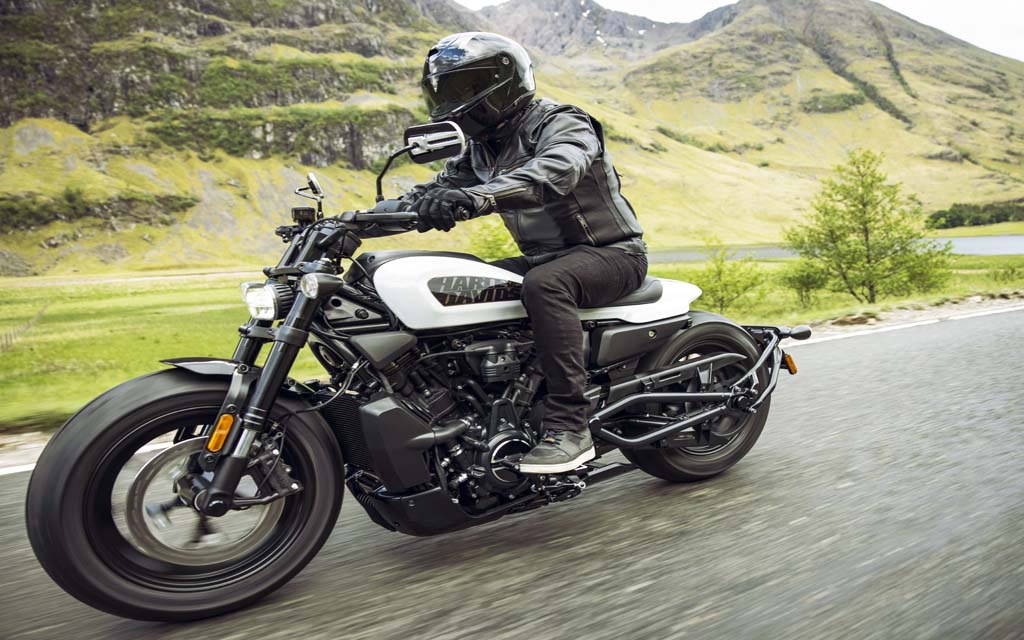






I knew the Sportster line would have to go liquid-cooled eventually, but the styling of the S has strayed too far from the clean, uncluttered lines of the air-cooled Sportsters. I realize Sportsters have been criticized in the past few decades for lack of power, but, styling wise, they are one of the purest forms of what a motorcycle should look like. I hope H-D comes out with another Sportster with the Revolution engine and the more bare-bones look of the air-cooled models.